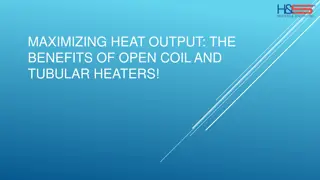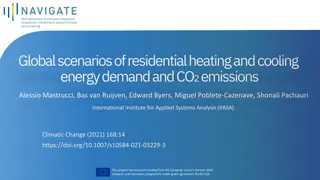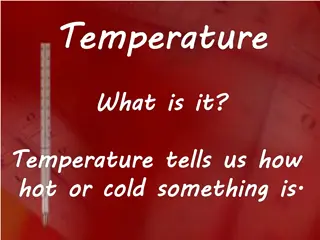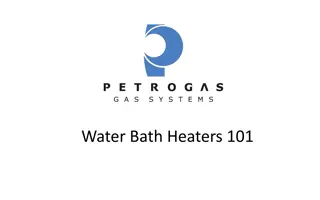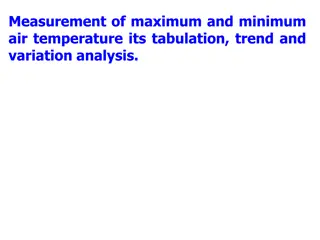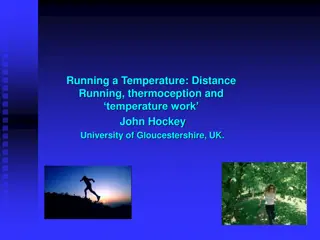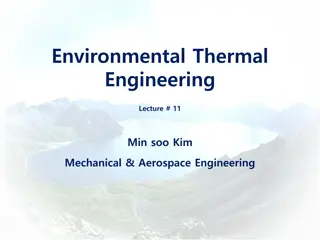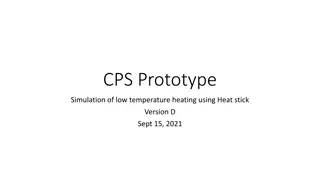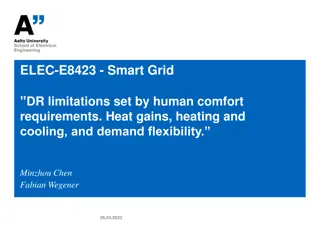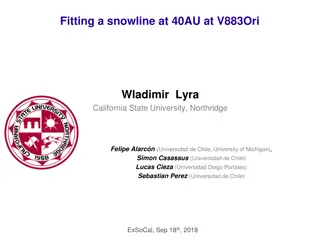
Integrating Low-Temperature Renewables in District Heating Systems
History and current status of district heating in Belarus, focusing on the development of low-temperature renewables integration. Insights into the use of local fuels, heat metering, and automation systems. Analysis of energy consumption, renewable energy sources, and emissions in the Belarusian district heating sector.
Download Presentation

Please find below an Image/Link to download the presentation.
The content on the website is provided AS IS for your information and personal use only. It may not be sold, licensed, or shared on other websites without obtaining consent from the author. If you encounter any issues during the download, it is possible that the publisher has removed the file from their server.
You are allowed to download the files provided on this website for personal or commercial use, subject to the condition that they are used lawfully. All files are the property of their respective owners.
The content on the website is provided AS IS for your information and personal use only. It may not be sold, licensed, or shared on other websites without obtaining consent from the author.
E N D
Presentation Transcript
INTEGRATING LOW-TEMPERATURE RENEWABLES IN DISTRICT HEATING AND COOLING SYSTEMS Focus on Belarus February 3-4 2021 BELARUSIAN NATIONAL TECHNICAL UNIVERSITY PROFESSOR V.A. SEDNIN and ALEXEI SEDNIN
HISTORY OF THE DEVELOPMENT OF DISTRICT HEATING IN THE REPUBLIC OF BELARUS Start: early nineties of the twentieth century. 1990. Developed district heating systems with the extraction factors (cogeneration) of over 50% 1994 2000 Decentralisation (extensive construction of gas-fired boiler houses, disconnected from district heating systems) Widespread implementation of heat metering and automation systems Start of use of pre-insulated heat pipes 2000 2010 Construction of small and medium-sized gas-fired CHPs 2005 2020 Construction of boiler houses using local fuel Construction of several mini-CHPs using local fuels.
BELSTAT million gigacalories Utility condensing power plants Utility district boiler houses Utility CHPs Boiler houses of organisations CHPs and mini-CHPs of organisations Heat production by category of energy producer
BELSTAT million gigacalories Heat consumption Heat consumption \including climatic factor Heat consumption including climatic factors
BELSTAT million gigacalories Used by organisations Energy delivered to the population Dynamics of end-use heat energy demand
BELSTAT Energy consumption from renewable energy sources in the Republic of Belarus 7.2.1.1 Share of primary energy generation (production) from renewable energy sources in gross consumption of fuel and energy resources, % Share of electrical energy generation from renewable energy sources in total generation of electrical energy, % Share of generation of heat energy from renewable energy sources in total generation of heat energy, % Emissions of pollutants into the atmospheric air from fuel combustion for heat and electricity generation, thousand tonnes per capita, kg per person per unit area, kg/km2 Emissions of pollutants into the atmospheric air from mobile sources, thousand tonnes per capita, kg per person per unit area, kg/km2 Greenhouse gas emissions in the energy sector, million tonnes CO2-equivalent per year of which 2
TOWARDS IMPROVING AND DEVELOPING DISTRICT HEATING SYSTEMS (CONCEPT OF THE DEVELOPMENT OF DISTRICT HEATING IN THE REPUBLIC OF BELARUS TO 2020) Adopted in 2010. Revised in 2017. Amended in 2020 and extended to 2025.
Strategic directions for the development of district heating: - Improving efficiency and ensuring continuous development of district heating systems by applying modern technologies, using local fuel and energy resources, secondary energy resources and alternative energy sources; - reliable, economic and secure supply of thermal energy to organisations and the population; - maximising the use of combined heat and power generation; - keeping the balance between the economic interests of energy supplying organisations (thermal energy suppliers) and consumers; - ensuring an economically justified return on investment capital under the conditions of state regulation of heat tariffs; - establishing an optimal management structure for heat supply processes; - eliminating intermediaries in the supply of heat energy to consumers; - improving regulations.
AMONG THE MOST REPRESENTATIVE SOLUTIONS the application of multi-rate district heating tariffs taking into account fuel taxes depending on their environmental properties; increased use of alternative fuels in place of natural gas and oil (combustible refuse, biomass, solar energy, geothermal energy, secondary energy resources from industrial production, etc.).
NPP Q = const To consumers W = const To consumers Boiler house Q = var Electric boilers in boiler houses Q = var W = var Network areas of the heating system CHP electric boilers W = var Q = const Power grid (W=const) W = const (Q = const) Q = const CHP Combined cycle W = var (CCGT-CPP) Steam turbine CCGT-CPP CPP W = const NPP W = const Isolated generating plant STRUCTURE OF ENERGY GENERATION SOURCES IN BELARUS AFTER 2020
NPP Electrical energy consumption Surplus energy [ ] [ ] mW [ - ] NPP Time of day, hr A scenario of the situation in the Belarusian energy system after the commissioning of the BelNPP. Heating season
(to clarify) (to clarify) Main heating networks CHP (to clarify) Submain heating networks Heat-pump system A SCHEMATIC DIAGRAM FOR INTEGRATING AN ENERGY COMPLEX AND A HEAT-PUMP SYSTEM INTO A DISTRICT HEATING SYSTEM
Consumer 2 Consumer 3 AT (to clarify) thermal energy source Consumer 1 Consumer 4 Consumer 5 Consumer 6 OPTIONS FOR INTEGRATING CUSTOMER TERMINALS INTO A DISTRICT HEATING SYSTEM: centralisation
Consumer 2 Consumer 3 AT (to clarify) AT (to clarify) Thermal energy source AT (to clarify) AT (to clarify) Consumer 4 Consumer 1 AT (to clarify) Consumer 5 AT (to clarify) AT (to clarify) Consumer 6 OPTIONS FOR INTEGRATING CUSTOMER TERMINALS INTO A DISTRICT HEATING SYSTEM: decentralisation
TH Qair flow E Q Qco Central heat supply station QTC Q Q Q energy complex AT (to clarify) Q E Structure of central heat supply station energy flows with energy complex and customer terminals, heat pump
Fuel Therm. energy CCGT Absorption heat pump Electricity Therm. - h energy (130 ) Therm. energy to the consumer Therm. energy hot water storage tank peak-reserve energy source Fuel A schematic diagram of a combined heat and power unit
Supply water 85 C 80 C 70 C 2 Secondary Heat Network Q2 Q2 70 C 130 C 55 C 50 C Supply water Supply water Return Water Plate Heat Primary Heat Network Secondary Heat Network Exchanger 70 C 50 C E Return water 68 C Return water Qe C 1 Return water 25 C Qg+Qe 130 C 70 C A G Primary Heat Network Supply water Supply water Qg 130 C Absorption Primary Heat Network Secondary Heat Network Exchanger Supply water 25 C 50 C 1-Absorption heat pump 2-Water/water heat-exchanger G-generator E-evaporator A-absorber C-condensor Return water Return water Co-generation-based absorption heat-exchange (Co-ah) system - a type of district heating system using absorption heat converters
Flue gases Flue gases Electricity Electricity Electricity Fuel Fuel peak-reserve energy source combustion turbine unit 6x53 MW combustion turbine unit Heat recovery system Heat recovery steam generator Air Air Flue gases Flue gases Water to storage tank Live steam Condensate Heat extraction Water from storage tank return water Absorption heat pump Storage tank return water industrial waste water 130 wastewater treatment 25 Boiler house - h from the consumer to the consumer A schematic diagram of a district heating peak-reserve energy source based on a combustion turbine unit with a combined cycle gas turbine
gas compressor unit with cogeneration combustion turbine unit in a simple cycle combustion turbine unit with cogeneration gas compressor unit in a simple cycle NPV [ ] USD [ ( )] USD/[thou.] m3 Net present value as a function of the cost of fuel (natural gas)


